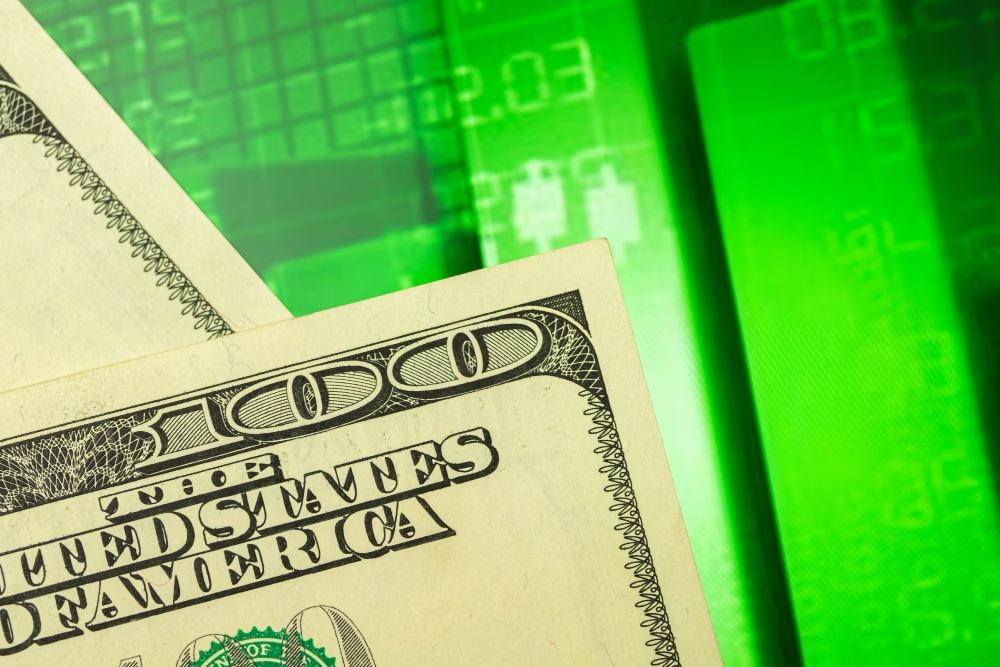- While the FOMC expressed concerns about the “lack of further progress” on inflation, the US central bank did not “pivot” toward rate hikes. In addition, the Fed’s QT taper announcement (cap dropped “from $60 billion to $25 billion”) was a bit more aggressive than projected (the market expected $30 billion).

- Moreover, Powell indicated that the Fed sees the tight monetary policy dampening demand for labor.
- Jerome Powell: – I do think that the evidence shows pretty clearly that policy is restrictive and is weighing on demand. And there are a few places I would point to for that. You could start with the labor market. So, demand is still strong. The demand side of the labor market, in particular. But it’s cool from its extremely high level of a couple of years ago. You see that in job openings. You see more evidence of that today in the Jols Report as you know.
- Bloomberg’s FOMC sentiment indicator moved back into dovish territory.

Source: @TheTerminal, Bloomberg Finance L.P.
- Nomura still expects two rate cuts this year.

Source: Nomura Securities
- Markets breathed a sigh of relief following the Fed’s less-hawkish-than-expected policy stance.
- Treasury yields and the dollar declined. Stocks jumped initially but quickly reversed gains to close lower.

Source: Rosenberg Research
Responding to the post-COVID/Ukraine War inflation, the Fed raised rates both higher and faster than anything seen since the early 1980s. This is a well-tested central bank strategy. You stop inflation by suppressing demand, and you suppress demand by making credit more expensive. Painful but effective.
This doesn’t have to cause recession but usually does. 11 of the 14 Fed hiking cycles since 1950 (excepting the current one) led to recessions.
 Source: Rosenberg Research
Source: Rosenberg Research
Seeing that pattern plus Powell’s clearly hawkish intent, recession seemed like a good bet. And that bet may yet pan out. The last few recessions began an average of 26 months following the first rate hike (which would mean we are almost there) and sometimes longer.

Source: Rosenberg Research
This one compares the 2-year and 10-year Treasury yields.

But more to the point, notice how the yield curve inverts (i.e., drops below the zero line) months before recession, then rises and is back above zero before the recession arrives. Currently we are in the first part of that process: The yield curve, while still inverted, is headed back to its normal condition. If the pattern holds, it will cross back above zero and then another one of those gray recession bars will appear soon after.
For this to happen, we need some combination of lower short-term rates and higher long-term rates. (That’s the definition of inversion; the 2-year Treasury yield is above the 10-year yield.) When that happens, you’ll probably see a bunch of analysts sound the all-clear. But in fact, we will be entering the danger zone.
When could it happen? This week’s FOMC statement showed (if there was still any doubt) lower short-term rates are unlikely for several more months, at least. Fed officials are correctly realizing inflation is not as dead as they thought.
That’s not to say they will raise rates. Inflation isn’t that bad yet. But to preserve their credibility, they now need to stay “higher for longer,” waiting for softer inflation data before any easing decision. One or two good reports won’t do it; they need a trend. I think we are looking at November/December, at best, for the first rate cut. This makes a certain sort of sense, as hiking right before an election is generally considered verboten. Or at least not politic.
US Economy
- Last month’s real consumer spending topped expectations, marking the largest monthly gain in over a year.
- Consumer saving keeps trending lower.

- The Atlanta Fed’s GDPNow model opened its Q2 growth estimate at nearly 4% annualized, reflecting robust consumer strength.
- Monthly PCE inflation data indicate that core inflation continues to run hot.
- Goldman anticipates that core PCE inflation will stabilize above 2.5% in the coming months.

- The FOMC is likely to revise its wage growth projections upward.
- Market expectations for Fed rate cuts this year were further curtailed following the ECI report. Less than 30 basis points of rate reductions is now priced in for 2024.
- The 2-year note yield climbed above 5%. The US dollar climbed with Treasury yields. Stocks retreated. Commodities sold off.
- The Chicago PMI dropped to the lowest level since the COVID shock, …

- … likely driven by weakness at Boeing. The Chicago PMI’s divergence from the ISM Manufacturing PMI (at the national level) is correlated to aircraft orders.

- The Conference Board’s Consumer Confidence Index revealed further deterioration this month, with higher-income consumers becoming more pessimistic.
- Job openings declined sharply in March, indicating that labor market imbalances are continuing to ease. Per Powell’s comments (above), this suggests that the Fed’s tight monetary policy is reducing demand
- Job openings in retail are falling rapidly.

- Growth in labor productivity slowed in the first quarter, pushing up unit labor costs.
- The ISM Manufacturing Index dipped back into contraction territory in April.
- Factories are not doing much hiring.
- The stock market, however, signals improvement in US factory activity.
Market Data
- The S&P 500 is about to test its 50-day moving average.

- In the current earnings season, EPS surprises have been the highest since 2021 (so far).

- Elevated Treasury yields have been a drag on market breadth.
- April was a challenging month for US stocks.

Great Quotes
“It is difficult to make predictions, especially about the future.” – Yogi Bera
Picture of the Week
Cheetah in Tanzania

All content is the opinion of Brian Decker






